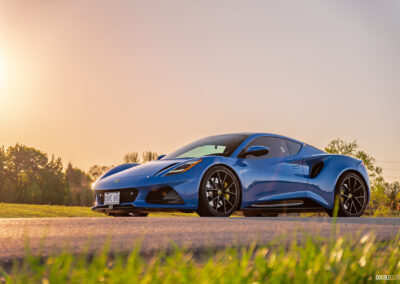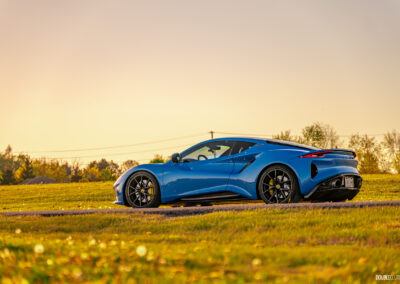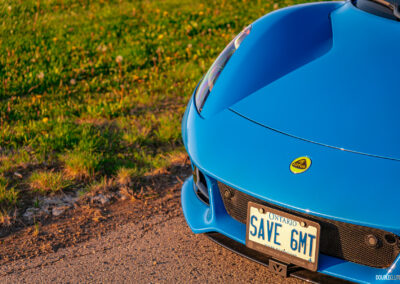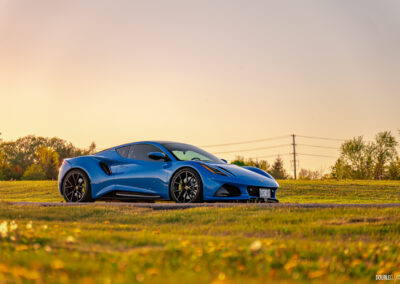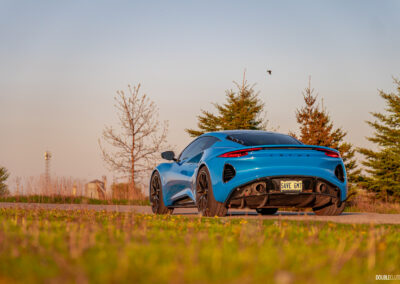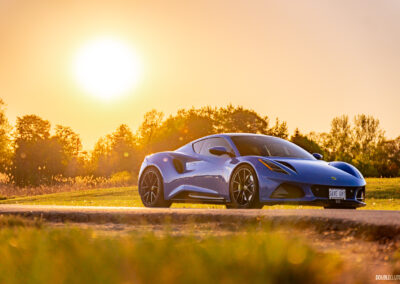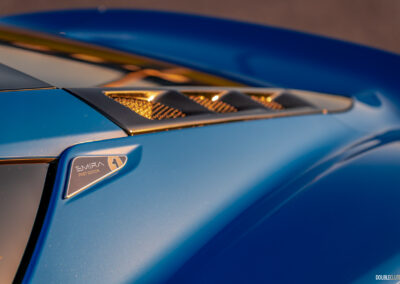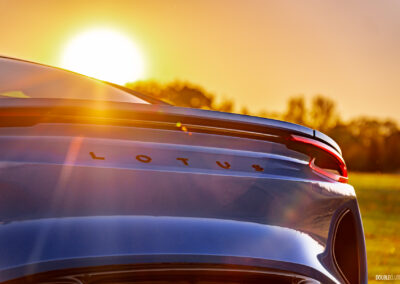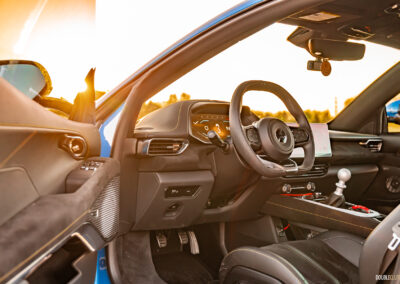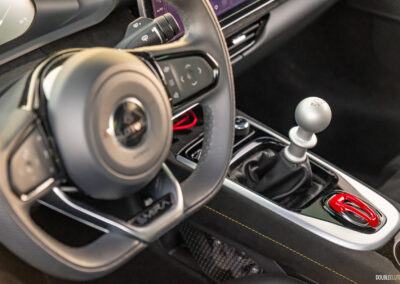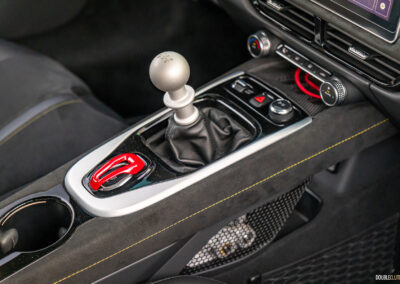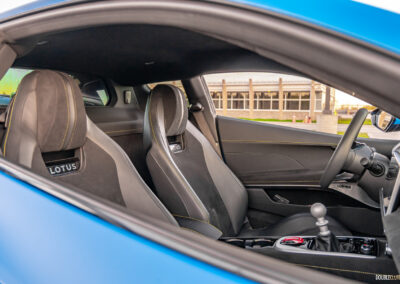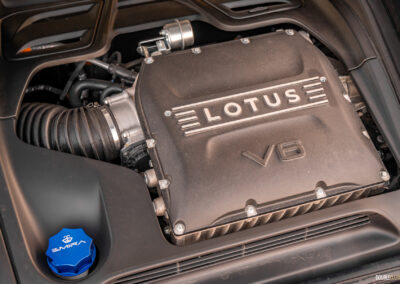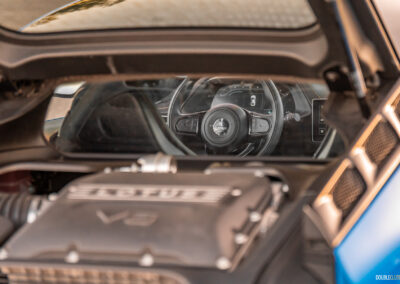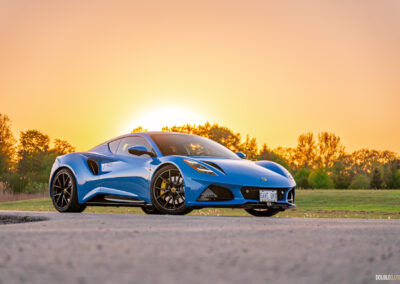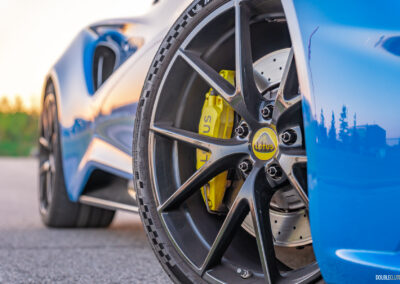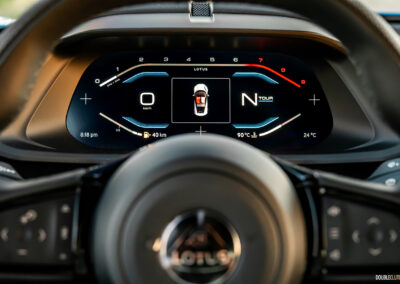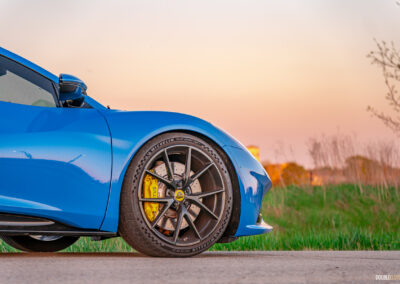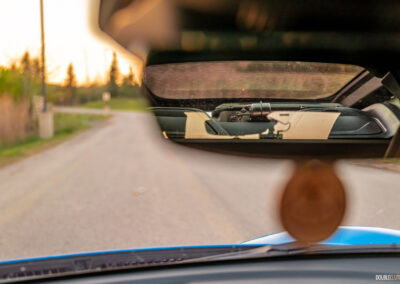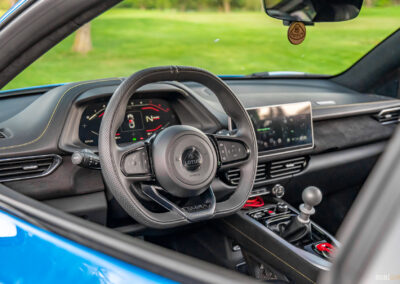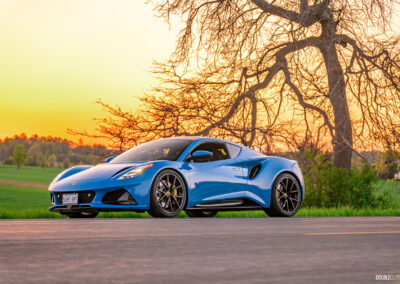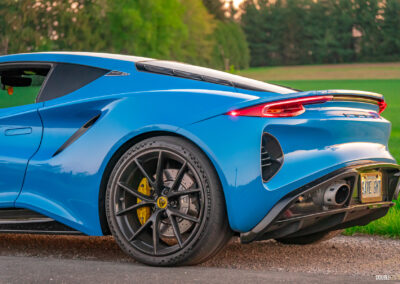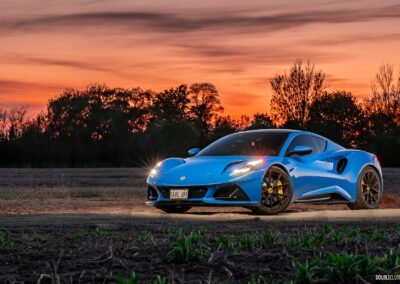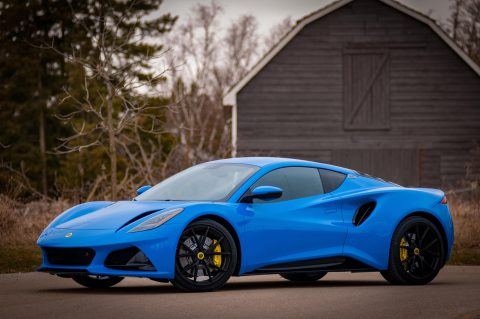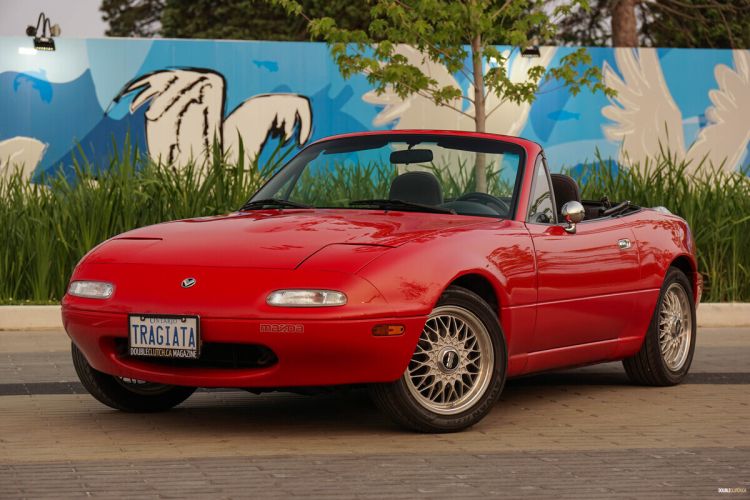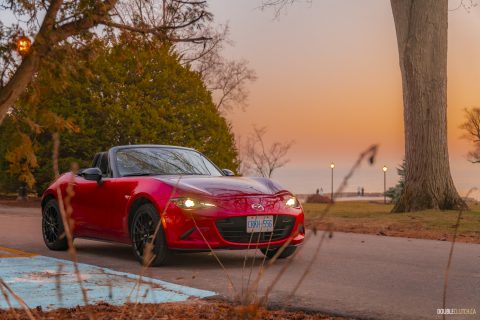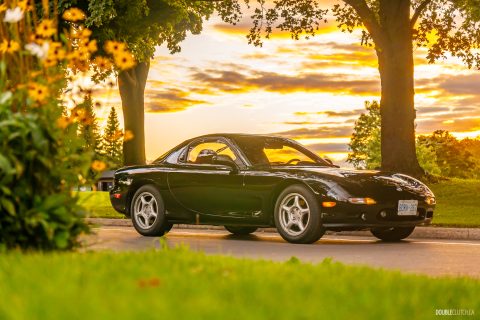One of the more common questions about this line of work is, “do you ever feel disappointed getting out of some of these incredible cars and back into your own?” That answer has always been … never. I like my cars. I made them mine for a reason. In fact, I like my Miata so much that I tend to avoid performance cars because they usually disappoint me. The 2024 Lotus Emira is the first car that’s ever challenged that.
I was tempted to drive my Miata across town to meet this Emira. It was a rare warm, beautiful spring day in an otherwise dreary season we haven’t enjoyed, but I’m glad I didn’t. It wouldn’t have spoiled the car I’m writing about — this happens more often than I care to admit, even with exotic machinery — but for the first time ever, I think I might’ve been disappointed getting back into my beloved little Miata. Yes, the Emira is that good.
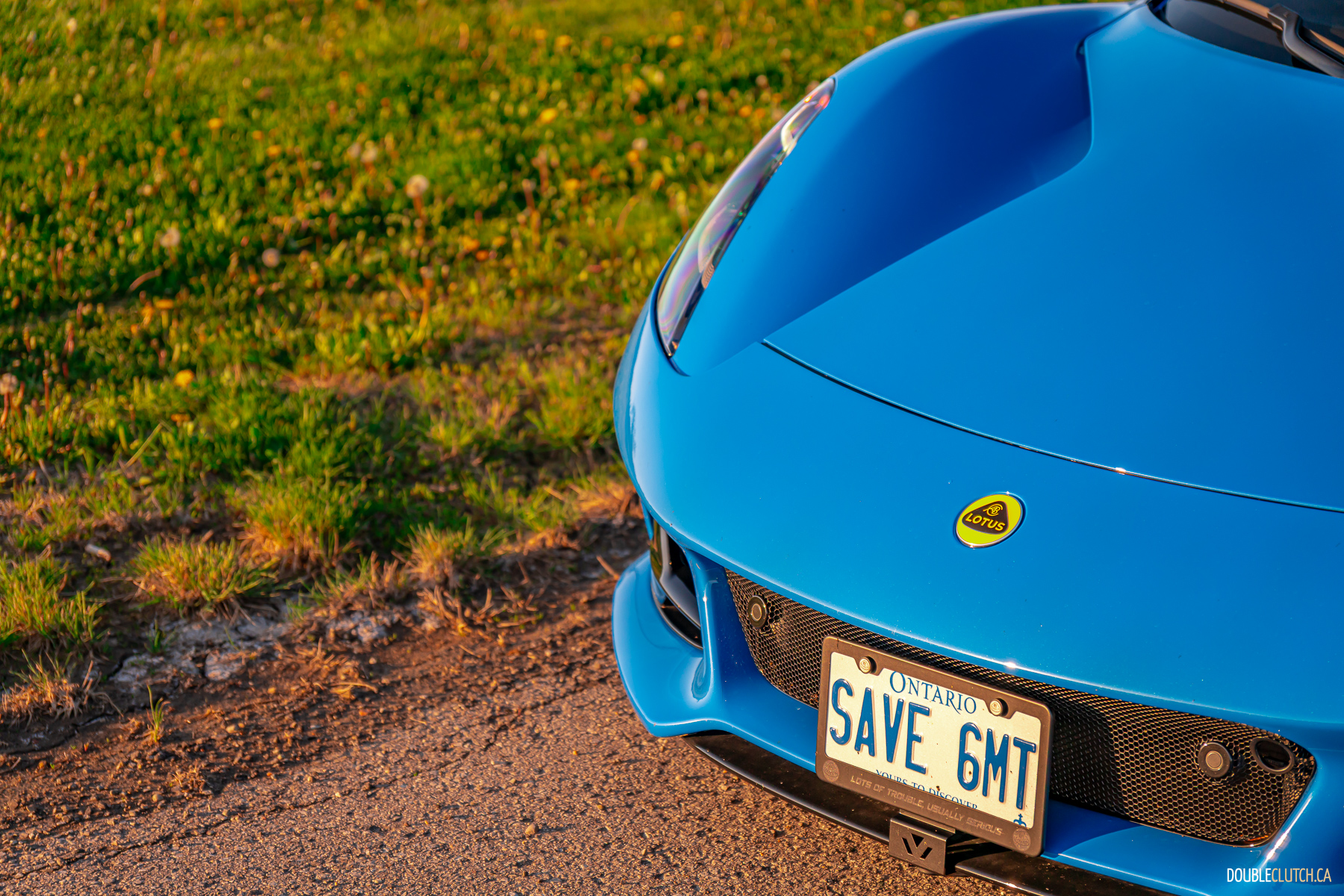
It was already running when I walked up to it. I knew just from the sound that the Emira was going to be different than any other new car I’d driven, because it didn’t sound like a new car. It was loud, not from a manicured exhaust tone trying to cover the ugly ticking of modern diesel-esque fuel injectors, but from a raw mechanical heaving that sounded more like breathing. Fans blowing, pulleys whirring, the aging stalwart Toyota V6 drawing exasperated breath through the supercharger’s bypass valve and exhaling through a short, barely-there exhaust. It’s so alive.
It’s loud, but not obnoxiously so, and it comes by it honestly. It’s not a loud, projected sound, but rather simply an inherent noise, a discordant mechanical muttering of a sublime car that just wants to run. It reminded me of the Ferrari Testarossa, which was a grouch of a car that made no sense if it wasn’t flying. The Emira is a tiny little thing with a big personality, and I haven’t even opened the door yet.
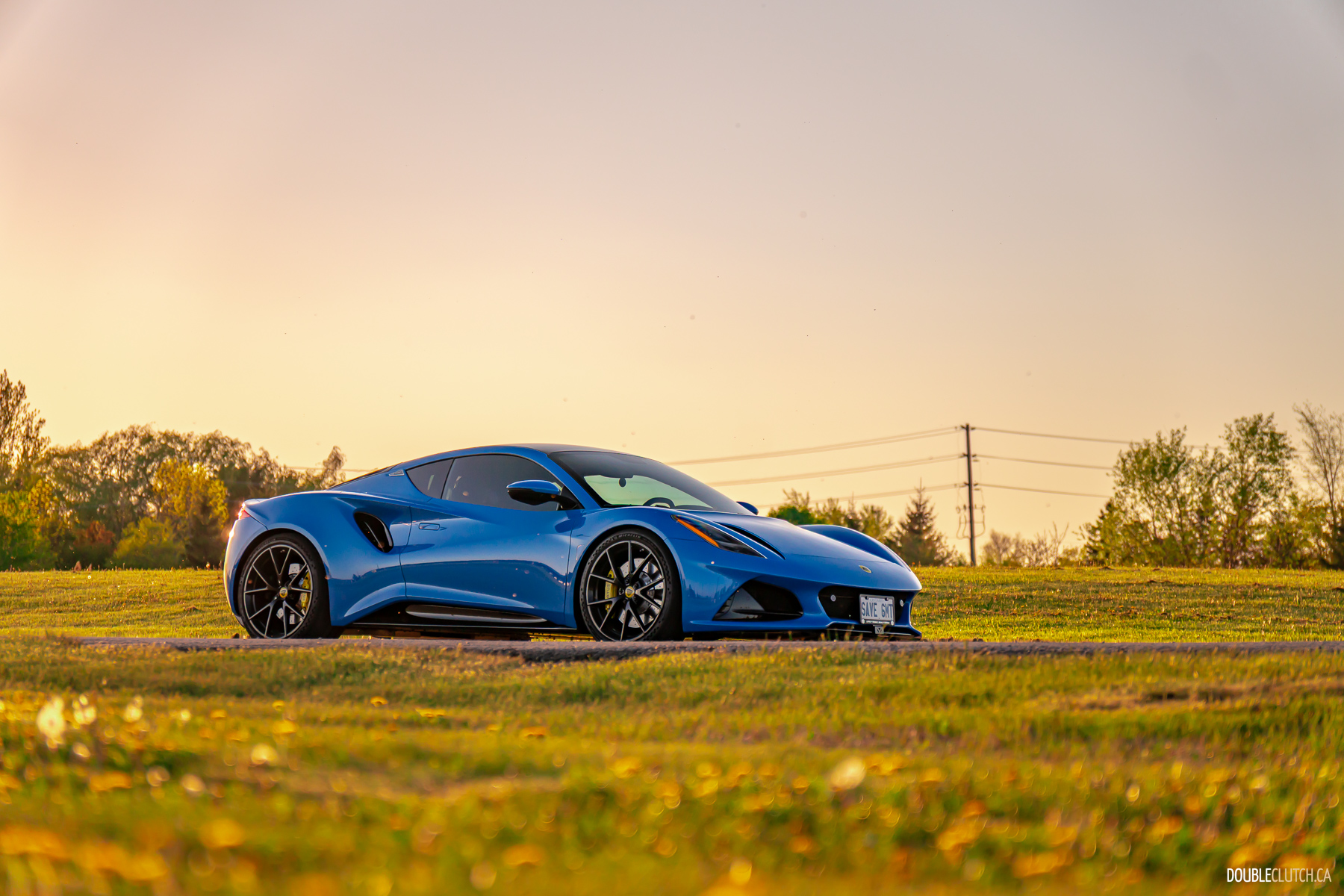
The Emira is supposed to be Lotus’ last internal combustion-powered sports car, but I believe that as much as I believed the overly ambitious EV targets that were being set by manufacturers and governments alike — including Lotus — in a bizarre bidding war to see who could be the most virtuous with the least regard for reality in the biggest hurry. Just as those claims are being sheepishly walked back worldwide, Lotus has stated they’d like to get back into building cars for other carmakers. The rumour-mill suggests this blown V6 might be replaced by an inevitably bigger, more powerful V8. Maybe it will end up being Lotus’ last gas burner, but I’m skeptical.
Once upon a time, I was also skeptical of all the praise heaped on this car. I like Lotuses [Or is it Lotii? —Ed.]. They’re one of the few car builders whose mysticism has never faded in the face of my ever-growing cynicism, but on the flipside, surely a modern can’t be that good. There’s no way a Camry engine can have that much personality. There’s no way a gimmicky exposed shifter mechanism can be that sweet. There’s no way a modern car’s chassis can feel that lively, or steering feel that tactile. There’s no way a modern vehicle can capture the raw rightness of an old sports car.
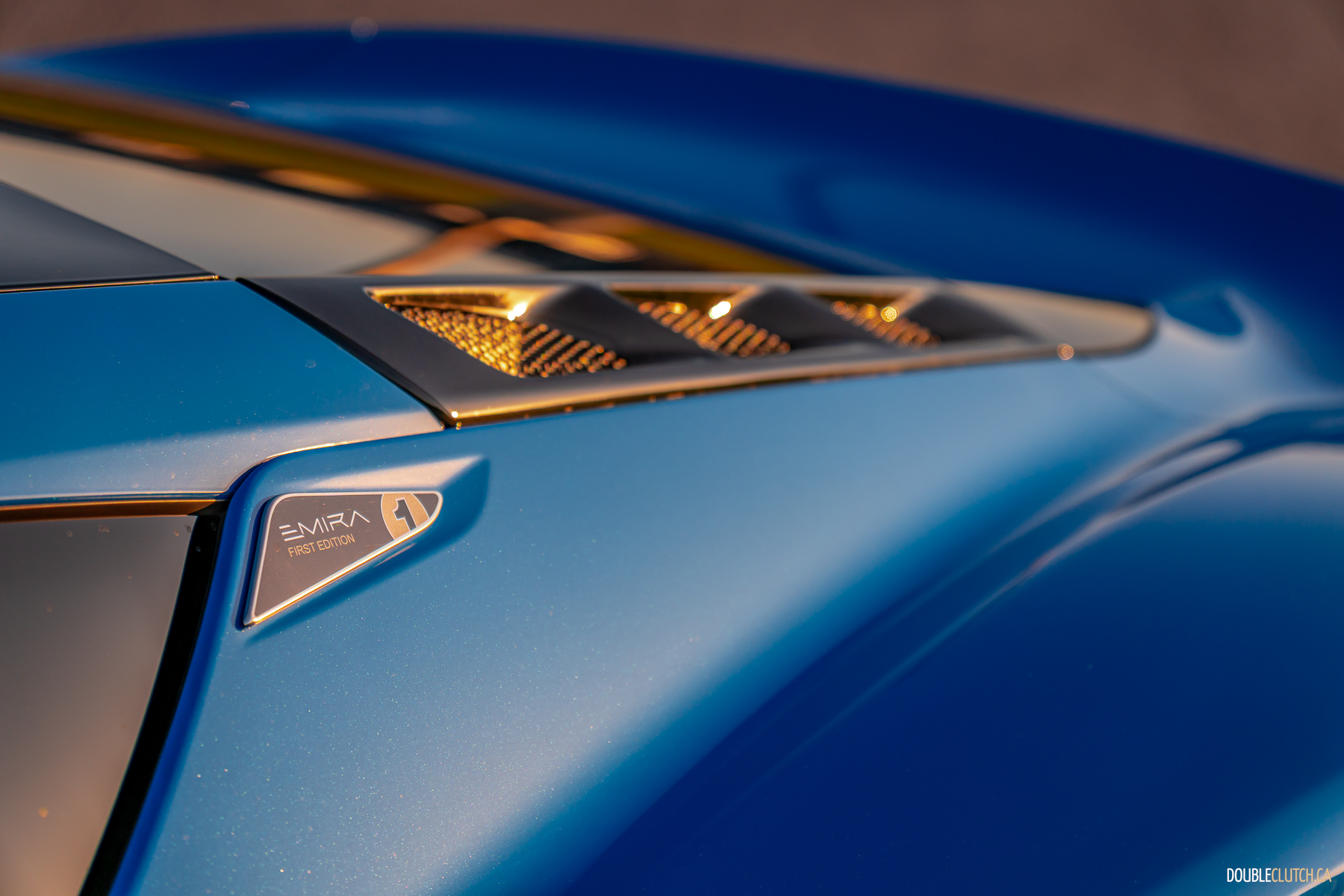
I met this car under sub-optimal circumstances and without the luxury of time on my side. I only had one night to get this car photographed, and thanks to the perpetual misery that is Toronto traffic, I arrived later than I would’ve liked. Moreover, I didn’t have any of my preferred shoot sites handy, and the sun was already sitting low in the sky. I had maybe 45 minutes of good light left, and even a whatever-tier shoot takes at least that long in favourable conditions on familiar turf.
This is why the Emira was running when I arrived. A quick hi-and-bye with an exchange of keys, a very helpful suggestion of a decent location nearby, and I jumped in and sped off towards the setting sun — panicking internally about how I was going to pull this off. I wasn’t even thinking about the car; there was no romance to it, no sense of occasion. I was just a working man trying to do a job with a serious time crunch.
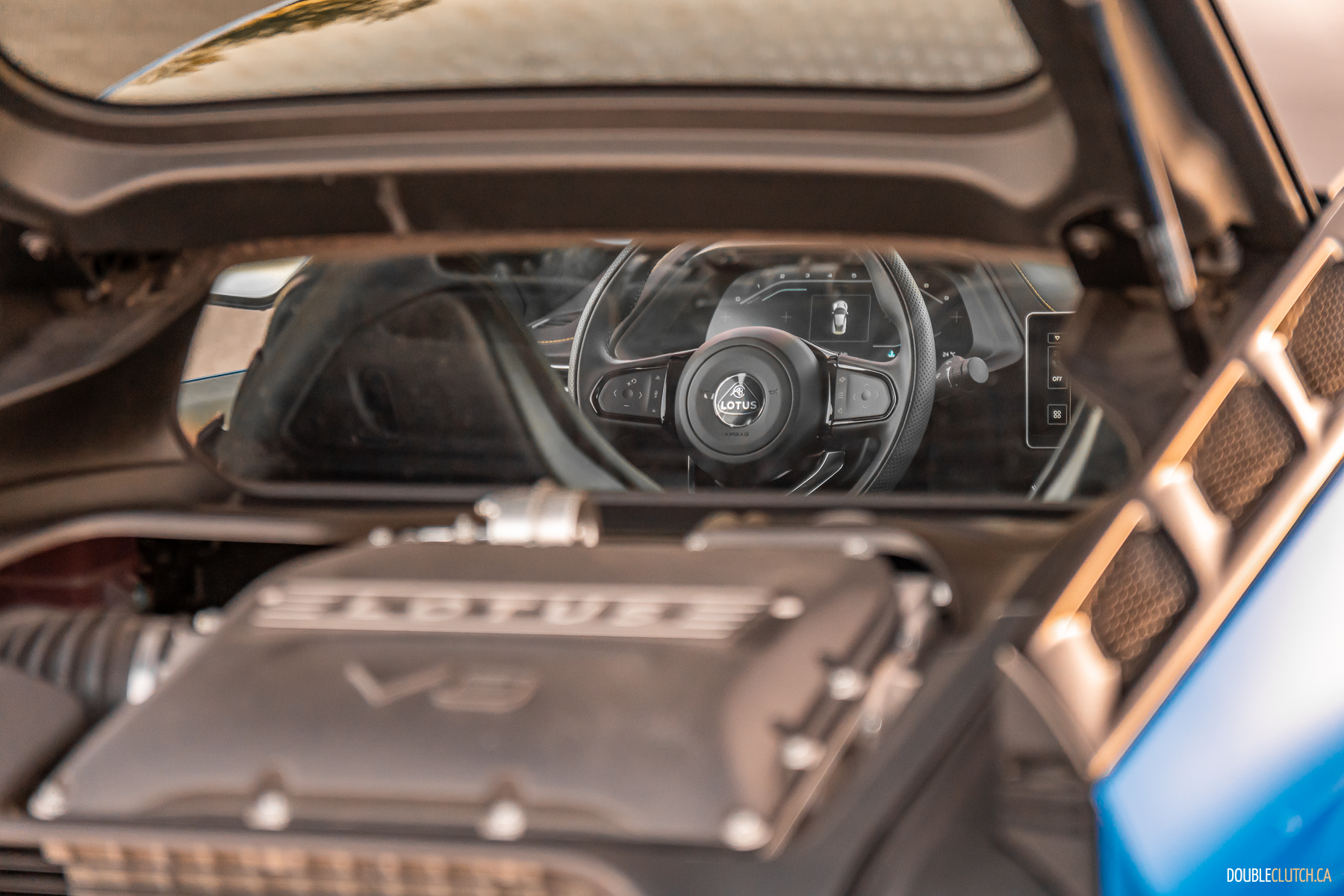
But the romance crept in quickly. That engine sounds good, especially when you’re on it, bellowing an exotic howl as it rises up the rev range. I hadn’t adjusted my mirrors yet, and doing so revealed a direct view of the engine perched right behind my head. I could plainly see the writhing throttle actuator responding to my inputs against the aluminum skinny pedal. It dawned on me that I didn’t really have to adjust to the clutch/shifter/throttle rhythm at all — we understood each other and fell into a natural cadence without having to think about it.
Nothing in the cabin needed much thinking about, once I had a minute to think about it. The driving position is natural, visibility out the front is excellent, and while it’s definitely a cozy inside, the Emira isn’t cramped. The centre screen is very minimalist in its interface and works well enough. Nothing is intimidating, nothing doesn’t immediately make sense, it’s pretty decent at not getting too swept-up in itself, and it can be just a car pretty easily. Some exotics feel the need to reinvent the wheel with every little thing to justify themselves, but this Lotus knows what it’s about.
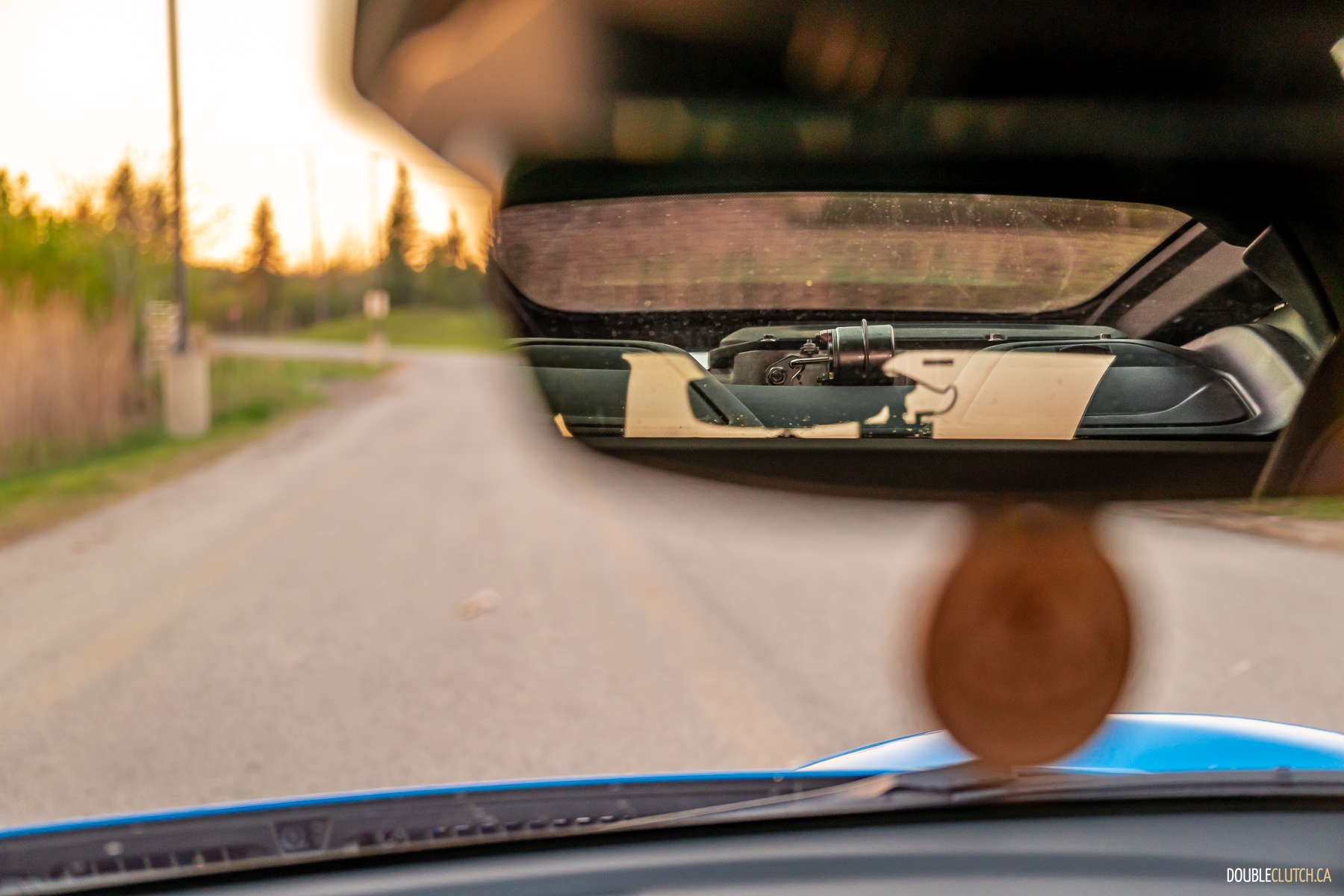
Our photo spot snuck up on me while I was still enthralled by the throttle actuator in the rear-view mirror. I also took the left maybe a little bit way too fast. But the Emira showed me the first flash of its chassis chops in this one instance; I’d have to make up an excuse to stay out and keep playing after the street lights came on.
I pulled up at the location with the sun perched low over the tree line. I had lots of space to work with and little in the way of visual distraction, so I knew it was going to be a relatively straightforward shoot that made the most of the Emira’s natural curvature, intricate details, and sparkling Seneca Blue metallic paint. Shooting a car tends to reveal its beauty, and despite things going so well, I wish I had more time with more light. I kept finding new details and angles to play with, absorbing the car’s inspiration and falling more in love with every minute.
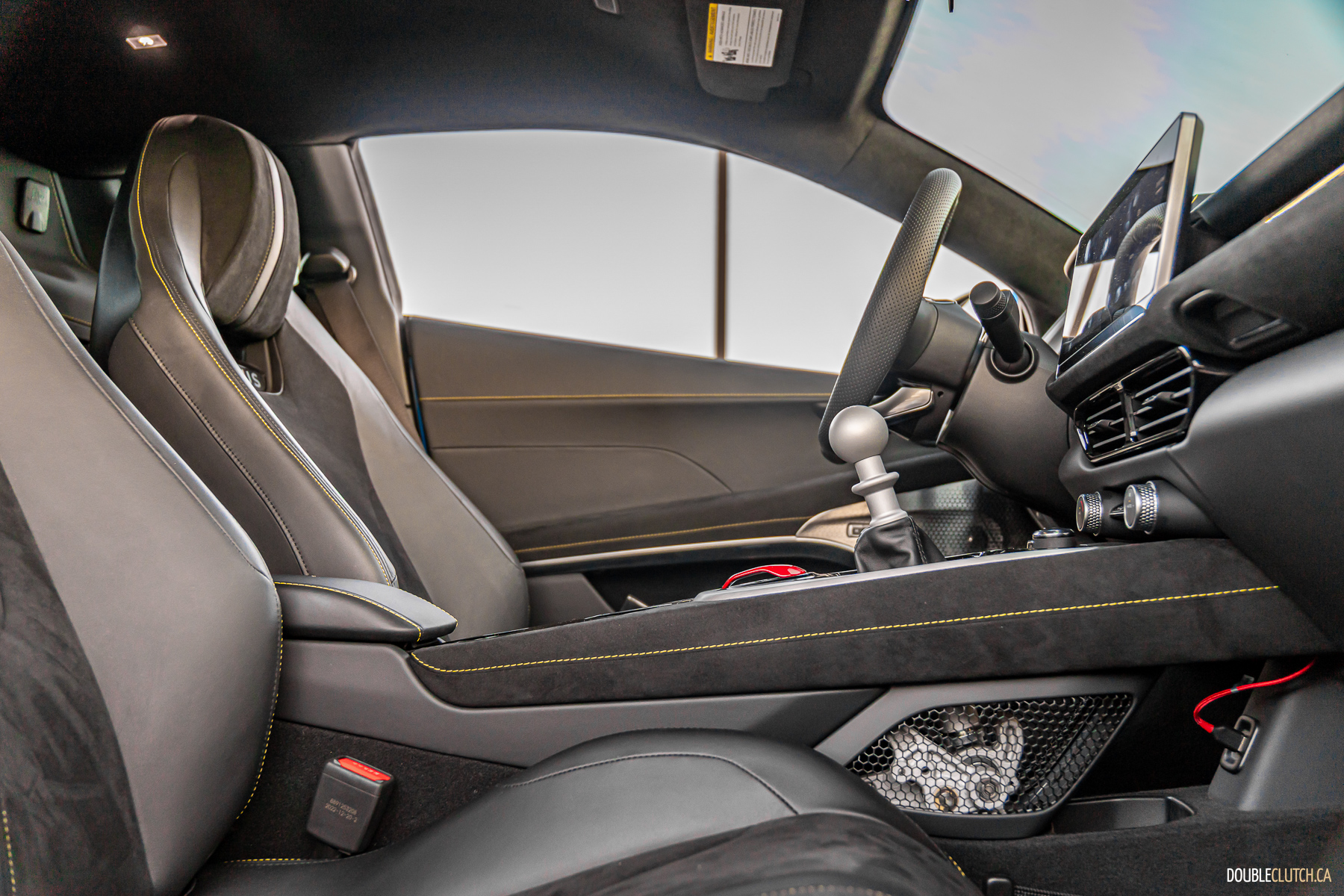
I had just barely enough light left to properly capture the Emira’s interior. It’s actually quite lovely; the seats are purposeful, thinly padded and well-sculpted for proper support without being fat-shaming. Everything throughout in this loaded First Edition is French-stitched leather and alcantara, or metal. There’s enough stylish flourishes to feel special and to give the camera something to work with, but it’s not begging for attention. The only concession to showmanship is the exposed shifter linkage, but even that is tastefully tucked low in the centre console behind a thick mesh. It’s the most flagrantly pornographic thing you can do in vehicle interior design, yet Lotus found a way to go about it that’s almost subtle and cool beyond a doubt.
With the sun just having dipped below the horizon and golden hour giving way to blue hour, I had enough material to save face. But I wanted more, and the Emira deserved it. So, knowing I had a baseline for coverage squared away and I picked out another shoot spot 15 minutes away, I could actually breathe and enjoy the car on the way there. So I did, and I learned that the supercharger on this engine is loud, even at low-ish revs. The piercing shriek of the crank-driven air pump overwhelms both the senses and the intake growl of the Toyota-Yamaha six-cylinder. I flipped the Emira into Track mode — not because I had delusions about partaking in racecar antics on rural roads, but because I just wanted the full, uncorked experience. Frankly, I was surprised that Lotus of all companies bothered dilly-dallying with silly drive modes in the first place; I loathe them in everything.
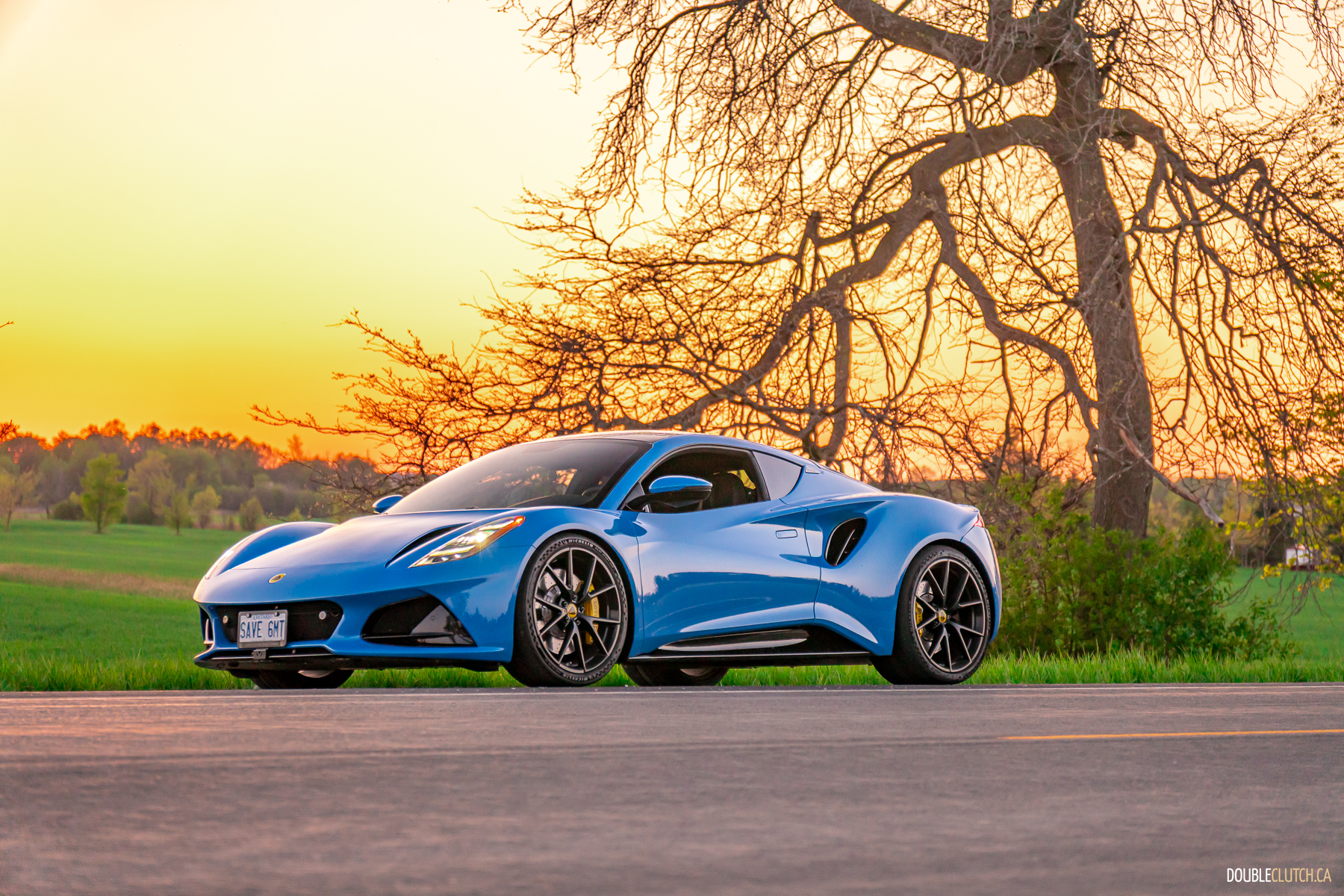
Throttle response is good, but not the best. The Emira still exhibits a smidge of Toyota’s artificial throttle-smoothing, but not enough to sour the experience. The brake response is eager and linear; a lot of other publications have called it over-eager, but I didn’t notice this, and I like a firm pedal. The clutch is progressive and easy to read, but it definitely bites pretty low. Not a problem if you’re used to older cars; I got used to it immediately.
The Emira’s steering is straight-up the best in any new car on sale right now, at any price. It exhibits a similar high-caster behaviour to the brilliant Corvette, with pin-sharp on-centre feel giving way to a very organic weight as you turn-in more, except there’s substantially more granular feel. Communication through the steering wheel is unparalleled, but as much as we tout the importance of talking through fingertips, the Emira is just as talkative through the thinly padded seat. You’re always well-apprised of what the front and rear ends are doing, and it feels like your butt is the fulcrum of the car’s pendulum.
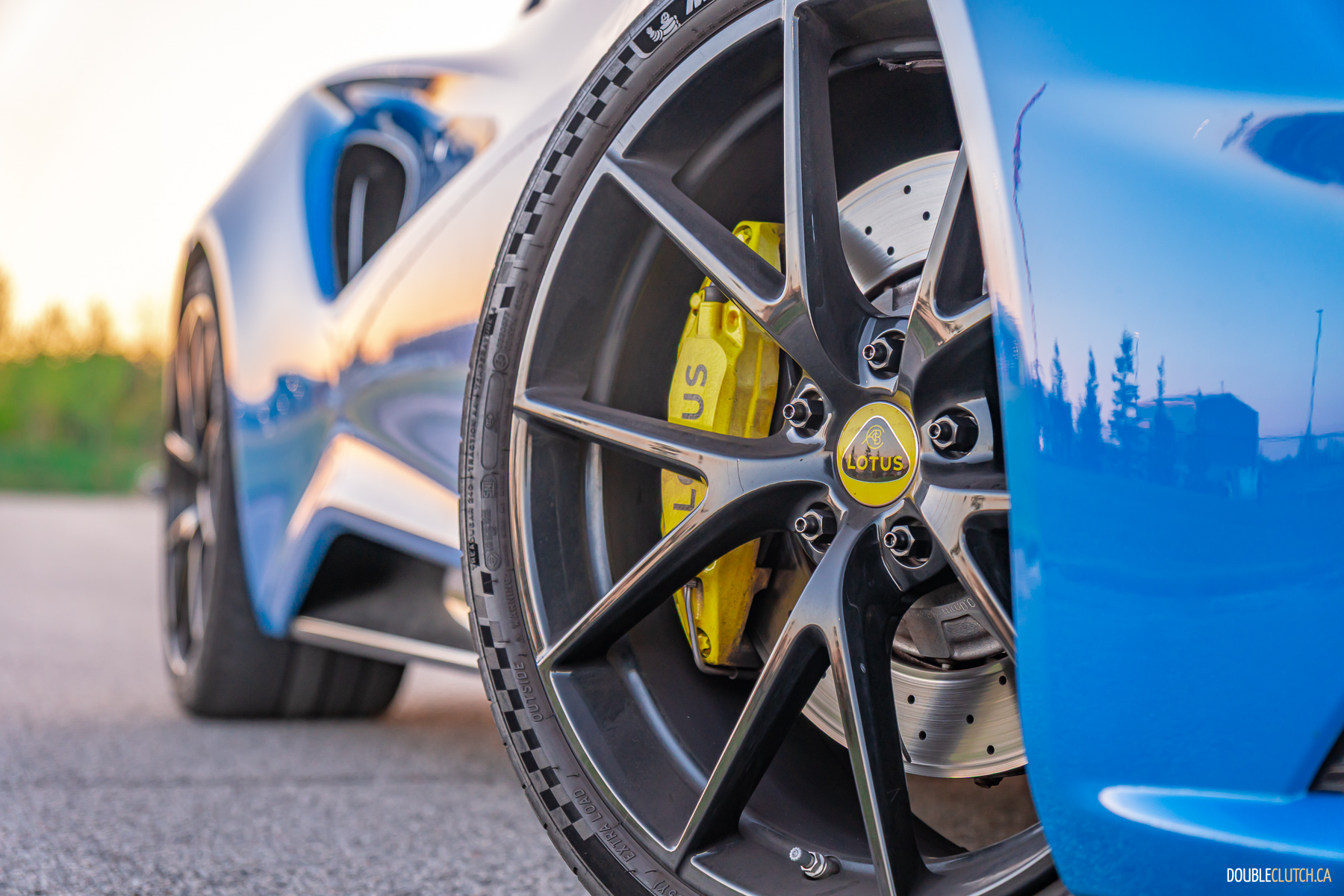
I feel like I shouldn’t need to say it, but the Emira’s sense of balance is impeccable. Turn-in strikes a perfect balance of being super eager but never nervous, mid-corner grip is fabulous and skews pretty neutral, and corner-exit grip is prodigious, with a few degrees of leeway you can dial in via the skinny pedal and well-chosen gear ratios. If you were very deaf, you wouldn’t even know this engine is boosted, either. It builds power linearly starting with a decent low end, building through a punchy mid-range, and holding a high note all the way to the top. With “just” 400 horsepower on tap, the Emira won’t set any records, but that’s not the point. It’s fast, more than exhilarating, and somewhat usable in reality without immediately risking a licence suspension.
What matters more than outright speed is the sense of speed, the interplay of the car’s controls and how they speak to you, how it all comes together and involves you in the experience of driving. The shifter exemplifies this ethos. Its action is chunky, deliberate, and feelsome, If you think a something like a Civic Type R has the best modern shifter ever, you probably won’t like it. But if you’re like me, are used to touchy-feely older cars that ask a little more of their pilots while handling a literal box of gears, you’ll love it.
I like my Miata so much because it’s pure and focused on delivering sheer delight above all else, by simply sticking to sound engineering principles and holding fast in the face of encroaching trends. I didn’t think I’d ever encounter another modern car that could match its dedication to pursuing an intangible target, but the 2024 Lotus Emira does that, and does so better than I could have imagined. It’s very fitting the Miata itself was inspired by none other than a Lotus, and it’s deeply gratifying to see that the old masters still know how it’s done.

